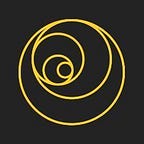How to Solve the Hardest Logic Puzzle Ever
A step-by-step guide to True, False, and Random
By Brian Gallagher
While a doctoral student at Princeton University in 1957, studying under a founder of theoretical computer science, Raymond Smullyan would occasionally visit New York City. On one of these visits, he met a “very charming lady musician” and, on their first date, Smullyan, an incorrigible flirt, proceeded very logically — and sneakily.
“Would you please do me a favor?” he asked her. “I am to make a statement. If the statement is true, would you give me your autograph?”
Content to play along, she replied, “I don’t see why not.”
“If the statement is false,” he went on, “you don’t give me your autograph.”
“Alright …”
His statement was: “You’ll give me neither your autograph nor a kiss.”
It takes a moment, but the cleverness of Smullyan’s ploy eventually becomes clear.
A truthful statement gets him her autograph, as they agreed. But Smullyan’s statement, supposing it’s true, leads to contradiction: It rules out giving an autograph. That makes Smullyan’s statement false. And if Smullyan’s statement is false, then the charming lady musician will give him either an autograph or a…
